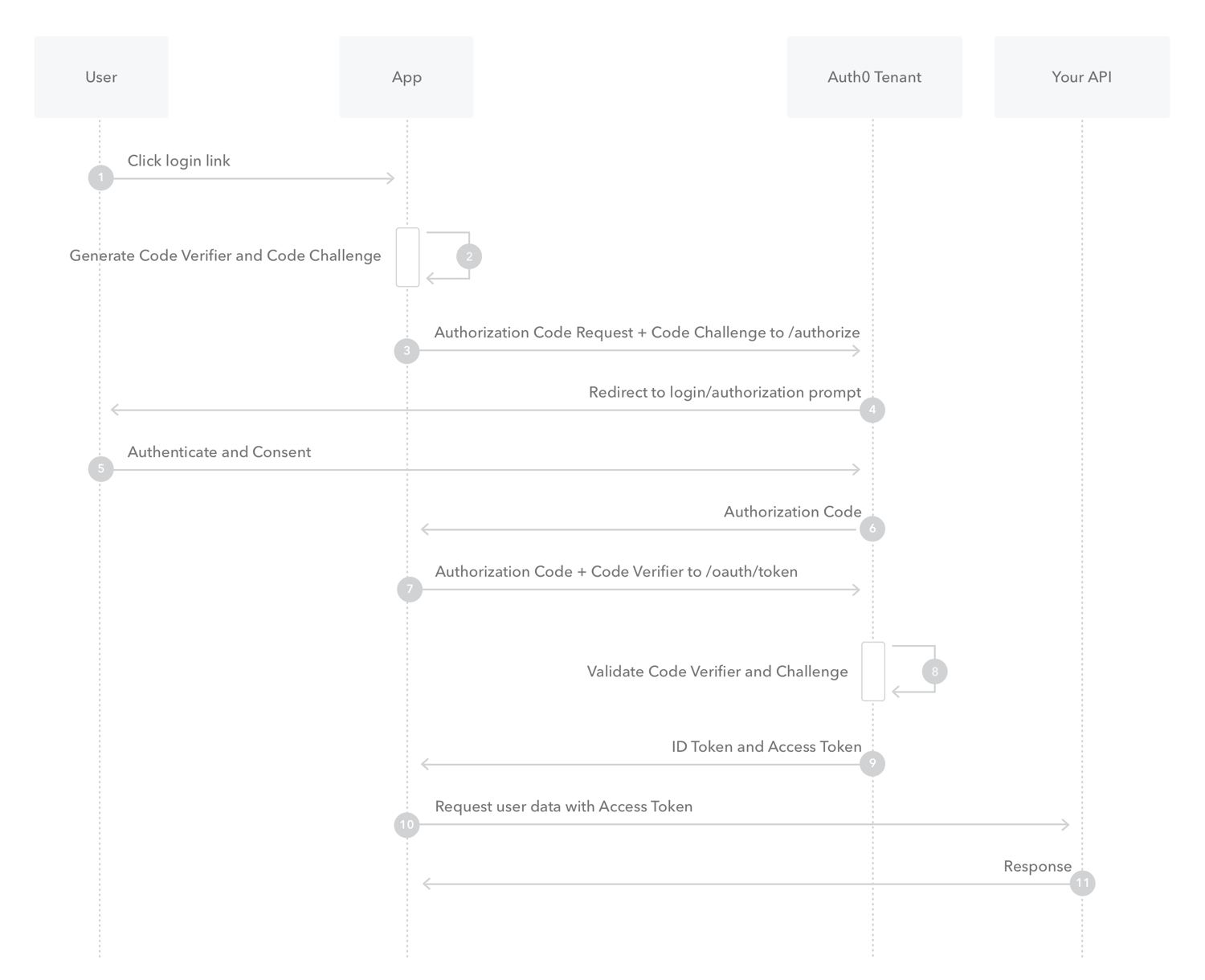OAuth2放弃 Implicit Flow 使用Authorization Code+ PKCE完成授权认证
Implicit Flow Password Grant,均已被标记为Legacy,且OAuth2.1里面已经删除了,目前OAuth2.1只剩三种flow:
- Authorization Code+ PKCE
- Client Credentials
- Device Code
OAuth 2.0 在 RFC7636 中定义了一种扩展模式,这种模式下,客户端 不需要使用 client_secret,模式中 PKCE 的全称是 Proof Key for Code Exchange。那怎么理解这个呢?简单来说,就是我们仍然 使用 Authorization Code 模式的流程,但是原来是需要服务端参与保存 client_secret,现在改成客户端临时生成一对密钥。

步骤:
- 用户点击登录按钮
- 应用生成
code_verifier,是一个随机值,然后对code_verifier做sha256,得到哈希值code_challenge - 应用携带
client_id,code_challenge请求 Authorization Server - Authorization Server 提示用户是否授权
- 用户点击同意授权
- Authorization Server 生成
code,同时保存code_challenge - 应用使用
code和code_verifier请求 Authorization Server - Authorization Server 对
code_verifier做sha256,得到哈希值,与code_challenge对比 - 对比成功,下发
access_token - 应用请求资源
access_token校验通过,返回响应
部分伪代码片段
(1)用户重定向到授权服务器
GET https://auth.example.com/authorize?
response_type=code&
client_id=your-client-id&
redirect_uri=https://yourapp.com/callback&
scope=openid profile email&
state=xyz123&
code_challenge=abc123...&
code_challenge_method=S256
注意:code_challenge_method=S256 表示使用 SHA256 哈希。
(2)客户端使用 code_verifier 交换 access_token
POST https://auth.example.com/token
Content-Type: application/x-www-form-urlencoded
client_id=your-client-id&
grant_type=authorization_code&
code=abcd1234&
redirect_uri=https://yourapp.com/callback&
code_verifier=original-verifier-here
如果 code_verifier 与之前的 code_challenge 匹配,就会发放 access_token:
{
"access_token": "eyJ....",
"id_token": "eyJ....",
"refresh_token": "...",
"expires_in": 3600,
"token_type": "Bearer"
}
为什么这样可以保证安全性?
首先临时生成一个 code_verifier,保存在本地,然后将 code_challenge 发给服务端,服务端进行保存,然后换取 access_token 时,再将 code_verifier 提交上去,如果黑客获取了 code_challenge,他也无法进行下一步操作,如果黑客获取了 code_verifier, 他虽然可以获得 access_token,但是无法使用 code_verifier 再次获取,因为 code_verifier 和 code_challenge 是一对临时 生成的随机密钥(准确来说是一个随机值和随机值的哈希值)。
如果是客户端直接保存了 client_secret 那就不一样了,黑客获取之后,总是可以通过 client_secret 和 code 来换取 access_token。 这就是这种模式的安全所在。
此种授权流程的安全性是基于
Https的,如果使用http攻击者将很容易获取到 access_token
其他补充
Native App中使用Code传参的话直接用原先的方式
- 1、是绑定URL Scheme通过类似app-name://?code=的方法把code传递给原生客户端;
- 2、在本地起个HTTP服务器通过http://localhost:port/?code=的方法监听code
- 直接在Native App里面嵌入Webview来传递,在携带code重定向这个步骤,拦截重定向url,获取code,换取token
全部评论